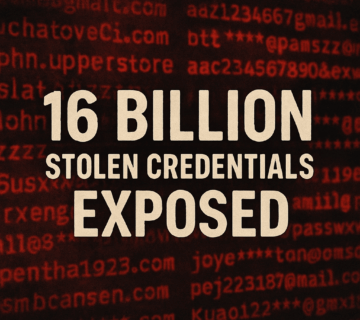Lumma Infostealer Malware Makes Strong Comeback Following Law Enforcement Disruption
🎙️Dive Deeper with Our Podcast!
Lumma Infostealer Malware Makes Strong Comeback After Law Enforcement Takedown
👉Listen to the Episode: https://technijian.com/podcast/lumma-infostealer-malware-makes-strong-comeback-after-law-enforcement-takedown/
The cybersecurity landscape continues to face evolving threats as malicious actors adapt to enforcement actions. Recent developments show that the Lumma infostealer malware operation has successfully rebuilt its infrastructure and resumed operations after experiencing significant disruption from a coordinated law enforcement campaign earlier this year.
The Initial Law Enforcement Impact
In May 2025, international law enforcement agencies conducted a comprehensive operation targeting the Lumma infostealer network. This action resulted in the seizure of approximately 2,300 domains and portions of the malware’s operational infrastructure. The scale of this enforcement effort initially appeared to deliver a substantial blow to the cybercriminal operation.
However, the disruption proved to be temporary rather than permanent. While the enforcement action created significant operational challenges for the Lumma operators, it did not result in a complete shutdown of their activities. The malware-as-a-service platform demonstrated remarkable resilience in the face of this law enforcement pressure.
Rapid Recovery and Infrastructure Rebuilding
The operators behind Lumma demonstrated their commitment to maintaining operations by quickly addressing the situation within cybercriminal forums. They acknowledged the enforcement action while maintaining that their core server infrastructure had avoided seizure, though they admitted to remote data wiping occurring during the operation.
Within weeks of the takedown, cybersecurity researchers began observing clear indicators of recovery. The criminal organization initiated immediate restoration efforts, working systematically to rebuild their compromised infrastructure and restore operational capabilities.
Current Operational Status and Activity Levels
Recent analysis from cybersecurity firms indicates that Lumma has achieved near-complete recovery of its pre-enforcement activity levels. Network monitoring data shows a dramatic resurgence in malicious traffic associated with the platform, suggesting successful infrastructure reconstruction.
The malware operation has regained significant trust within cybercriminal communities, enabling it to resume facilitating infostealing operations across multiple platforms. This recovery demonstrates the sophisticated organizational structure and technical capabilities of the criminal operators.
Strategic Infrastructure Changes
Following the law enforcement action, Lumma operators made strategic adjustments to their infrastructure approach. While they continue utilizing legitimate cloud services to mask malicious traffic patterns, they have shifted away from previously used providers that were compromised during the enforcement operation.
The organization has notably moved from Cloudflare services to alternative hosting providers, with particular emphasis on Russian-based Selectel services. This strategic shift aims to reduce vulnerability to future enforcement actions while maintaining operational effectiveness.
Current Distribution Methods and Attack Vectors
The revitalized Lumma operation employs four primary distribution channels to achieve new infections, demonstrating a comprehensive approach to victim targeting.
Fraudulent Software Cracks and Keygens
Criminal operators promote fake software cracks and key generators through manipulated advertising campaigns and search result manipulation. Potential victims are directed to deceptive websites that employ Traffic Detection Systems to fingerprint visitor systems before delivering the Lumma Downloader payload.
ClickFix Social Engineering Attacks
Compromised legitimate websites display fabricated CAPTCHA verification pages designed to trick users into executing PowerShell commands. These commands load Lumma directly into system memory, enabling the malware to evade traditional file-based detection mechanisms.
GitHub Repository Exploitation
Attackers actively create GitHub repositories featuring AI-generated content that advertises fake gaming cheats and modifications. These repositories host Lumma payloads, including files like “TempSpoofer.exe,” distributed either as direct executables or within compressed archive files.
Social Media Platform Distribution
Current distribution campaigns utilize YouTube videos and Facebook posts to promote cracked software applications. These social media posts direct users to external websites hosting Lumma malware, sometimes exploiting trusted services like sites.google.com to enhance perceived credibility.
Implications for Cybersecurity Defense
The successful recovery of Lumma operations highlights significant challenges in combating sophisticated cybercriminal enterprises. The ability of these organizations to rapidly rebuild and adapt following major enforcement actions demonstrates their resilience and resource availability.
This development underscores the importance of comprehensive cybersecurity strategies that extend beyond relying solely on law enforcement actions. Organizations must implement robust defensive measures that account for the persistent and adaptive nature of modern cybercriminal operations.
Lessons Learned from the Lumma Recovery
The Lumma case study provides valuable insights into the operational characteristics of modern malware-as-a-service platforms. These criminal enterprises demonstrate remarkable business continuity planning, technical expertise, and financial resources that enable rapid recovery from significant disruptions.
The profitability of infostealer operations creates strong incentives for operators to invest in resilient infrastructure and recovery capabilities. This economic reality suggests that enforcement actions alone may be insufficient to permanently disrupt determined cybercriminal organizations.
Enhanced Detection and Prevention Strategies
Organizations must adapt their cybersecurity approaches to address the evolving tactics employed by recovered malware operations like Lumma. This includes implementing advanced threat detection systems capable of identifying memory-based attacks and social engineering campaigns.
Employee education programs should emphasize recognition of sophisticated distribution methods, particularly those involving fake software, manipulated social media content, and deceptive CAPTCHA pages. Regular security awareness training can significantly reduce successful infection rates.
Future Threat Landscape Considerations
The Lumma recovery demonstrates that cybercriminal organizations view law enforcement actions as operational challenges to overcome rather than permanent deterrents. This perspective necessitates continuous adaptation of defensive strategies and international cooperation in cybersecurity efforts.
Organizations should expect continued evolution in malware distribution methods and infrastructure approaches as criminal operators learn from enforcement actions. Proactive defense strategies must account for this adaptive behavior pattern.
Frequently Asked Questions
What is Lumma infostealer malware? Lumma is a malware-as-a-service platform designed to steal sensitive information from infected systems. It operates as a commercial service that criminal operators can purchase and deploy for information theft campaigns.
How did law enforcement initially disrupt Lumma operations? In May 2025, international law enforcement agencies seized approximately 2,300 domains and portions of Lumma’s infrastructure in a coordinated operation targeting the criminal network.
How quickly did Lumma recover from the law enforcement action? Cybersecurity researchers observed signs of recovery within weeks of the takedown, with near-complete restoration of pre-enforcement activity levels achieved in a relatively short timeframe.
What infrastructure changes did Lumma make after the enforcement action? Lumma operators shifted from Cloudflare services to alternative hosting providers, particularly Russian-based Selectel, to reduce vulnerability to future enforcement actions.
What are the primary distribution methods currently used by Lumma? Current distribution methods include fake software cracks/keygens, ClickFix social engineering attacks, GitHub repository exploitation, and social media platform distribution through YouTube and Facebook.
How can organizations protect against Lumma infections? Organizations should implement comprehensive cybersecurity strategies including advanced threat detection, employee education programs, regular security awareness training, and robust endpoint protection systems.
Why was the law enforcement action ultimately ineffective in stopping Lumma? The enforcement action lacked arrests or indictments of key operators, allowing them to rebuild their infrastructure. The profitability of the operation provided strong incentives for recovery efforts.
What does the Lumma recovery mean for future cybersecurity efforts? The recovery demonstrates the need for sustained, multi-faceted approaches to cybersecurity that combine law enforcement efforts with robust defensive measures and international cooperation.
How Technician Services Can Help Protect Your Organization
Professional cybersecurity technicians play a crucial role in defending against sophisticated threats like Lumma infostealer malware. Expert technical support can provide comprehensive protection through multiple specialized services.
Cybersecurity technicians can implement advanced threat detection systems specifically designed to identify and block infostealer attacks before they compromise sensitive data. These professionals understand the evolving tactics used by criminal operators and can configure defensive systems accordingly.
Technical specialists can establish robust endpoint protection strategies that address both traditional file-based threats and advanced memory-injection techniques employed by modern malware. This includes deploying behavioral analysis tools and implementing application whitelisting controls.
Professional technicians provide essential security awareness training programs tailored to address current threat landscapes. These educational initiatives help employees recognize and avoid sophisticated social engineering attacks, fake software distributions, and deceptive online content.
Expert technical support includes comprehensive incident response planning and implementation. Should a security breach occur, qualified technicians can rapidly contain threats, assess damage, and restore normal operations while preserving critical evidence.
Cybersecurity professionals can conduct regular security assessments and penetration testing to identify vulnerabilities before criminal operators exploit them. These proactive measures significantly reduce organizational risk exposure to evolving threats.
Technical specialists provide ongoing security monitoring services that detect suspicious activities and potential compromise indicators in real-time. This continuous oversight enables rapid response to emerging threats and minimizes potential damage from successful attacks.
Professional cybersecurity support ensures organizations maintain current security patch levels, proper system configurations, and effective backup strategies that support rapid recovery from potential security incidents.
About Technijian
Technijian is a premier managed IT services provider, committed to delivering innovative technology solutions that empower businesses across Southern California. Headquartered in Irvine, we offer robust IT support and comprehensive managed IT services tailored to meet the unique needs of organizations of all sizes. Our expertise spans key cities like Aliso Viejo, Anaheim, Brea, Buena Park, Costa Mesa, Cypress, Dana Point, Fountain Valley, Fullerton, Garden Grove, and many more. Our focus is on creating secure, scalable, and streamlined IT environments that drive operational success.
As a trusted IT partner, we prioritize aligning technology with business objectives through personalized IT consulting services. Our extensive expertise covers IT infrastructure management, IT outsourcing, and proactive cybersecurity solutions. From managed IT services in Anaheim to dynamic IT support in Laguna Beach, Mission Viejo, and San Clemente, we work tirelessly to ensure our clients can focus on business growth while we manage their technology needs efficiently.
At Technijian, we provide a suite of flexible IT solutions designed to enhance performance, protect sensitive data, and strengthen cybersecurity. Our services include cloud computing, network management, IT systems management, and disaster recovery planning. We extend our dedicated support across Orange, Rancho Santa Margarita, Santa Ana, and Westminster, ensuring businesses stay adaptable and future-ready in a rapidly evolving digital landscape.
Our proactive approach to IT management also includes help desk support, cybersecurity services, and customized IT consulting for a wide range of industries. We proudly serve businesses in Laguna Hills, Newport Beach, Tustin, Huntington Beach, and Yorba Linda. Our expertise in IT infrastructure services, cloud solutions, and system management makes us the go-to technology partner for businesses seeking reliability and growth.
Partnering with Technijian means gaining a strategic ally dedicated to optimizing your IT infrastructure. Experience the Technijian Advantage with our innovative IT support services, expert IT consulting, and reliable managed IT services in Irvine. We proudly serve clients across Irvine, Orange County, and the wider Southern California region, helping businesses stay secure, efficient, and competitive in today’s digital-first world.

